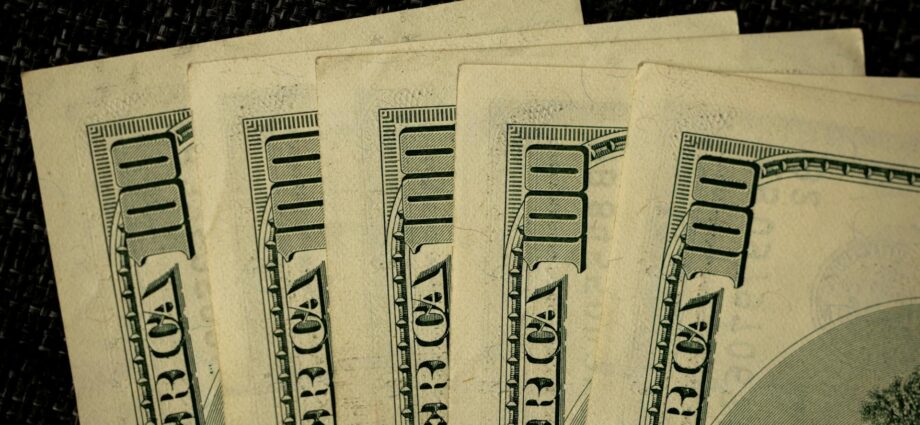
Trump’s tariffs have the US dollar falling…up
by J.L. Morin
February 3, 2025
The world stands on the precipice of immense geopolitical turmoil, with central banks, once steadfast in their reliance on the US dollar, now turning to gold and silver. This shift is driven by mounting fears surrounding the crippling interest payments on staggering US government debt. So why is the dollar falling…up?
With all eyes on the burgeoning interest payments that have surpassed even defense and transportation costs, making them the largest single federal expenditure, the elephant in the room is the dollar’s oblivious ascent. This nadir is a result of turmoil in the import/export markets. Import/export is the foundation of currency exchange. Whether ignoring these flows was taboo to say, or the new generation just can’t think that far ahead, the fact remains: export to the USA puts huge downward pressure on the USD.
The dollar is falling up because markets are pricing in the future lack of dollar sales by exporters, due to Trump’s trade war. Foreign manufacturers no longer exporting to the US won’t be selling their dollar proceeds to repatriate their profits in their home currencies. Without this selling of dollars to buy local currencies, a huge drag on the US dollar has been lifted. An example of this mechanism came when the dollar soared after Trump’s announcement of trade tariffs on Canadian goods.
Countless examples
Another interesting case study is the 2018-19 trade war between the US and China. During this period, the Trump administration imposed tariffs on approximately $370 billion of Chinese goods. His increase of tariffs from an average of 3% to 19% coincided with the dollar strengthening in foreign exchange markets.
China retaliated with tariffs on US exports, raising rates from 7% to 21%. The decreased trade between the two partners alleviated the US trade deficit, since the US eased up on importing more than it exports. And the US Dollar’s DXY index showed a significant gain of 10% in 2018 and 4% in 2019.

Trade Balances and Currency Strength
The Mechanism that has dragged the dollar down in the past is as follows. When a country exports more to the USA than it imports, it creates a trade surplus. This surplus leads to a higher demand for the exporting country’s currency.
Here’s why demand increases for the exporting country’s currency: domestic importers need the exporting country’s currency to purchase its goods. This increased demand drives up the value of the exporting country’s currency.
In the days of relative weakening of the USD, the exporting countries’ currencies have strengthened, and the USD has previously become relatively weaker. This made the exporting country’s goods more competitive in the US market, further boosting exports.
Let’s say, for example, that Country X has a significant trade surplus with the USA. This means Country X is exporting more goods to the USA than it’s importing from the USA. To buy these goods, US buyers need to exchange USD for Country X’s currency. This increased demand for Country X’s currency strengthens it, making the USD relatively weaker.
The strength of a currency largely depends on trade balances. A trade surplus can be a powerful driver of currency appreciation. A country such as Ireland, with a persistent trade surplus, may see its currency appreciate significantly over time. The exchange rate is affected through several mechanisms, the main one being foreign trade surpluses. As countries begin exporting more to the USA than they import, foreign surpluses strengthen exporting countries’ currencies, making the USD relatively less valuable.
But now the looming threat of a tariff war, especially with economic giants like Europe, Canada, and Mexico, threatens to exacerbate the dollar’s ascent. Tariffs will also spur inflation by choking supply chains and sending prices spiraling higher.
Tariffs, by their very nature, raise the cost of goods, driving inflation to unsustainable levels and further tightening the grip on consumers. Consumer debt is reaching crisis levels, with credit card defaults hitting a 16-year high, as consumers use credit to cover basic necessities like groceries and gas. This surge in debt has a chilling effect on the economy, leaving people more vulnerable to the rising tide of inflation.
The removal of exports to the USA has boosted the USD 7% since September, as manufacturers reorganize their exports to other countries. This can be a bumpy ride, as the impact of exports on the USD exchange rate is also influenced by other factors, including the overall global economic conditions, interest rate differentials, and investor sentiment, but so far since Trump’s tariffs announcement, the dollar has shot up.
Despite the Federal Reserve’s efforts to lower interest rates, mortgage rates continue to climb, a consequence of the government’s insatiable need to manage its ever-growing debt. As deficits deepen and tariffs bite, it seems that a higher dollar will be the norm for the foreseeable future.
Subscribe to our newsletter.
This article was originally published on IMPAKTER. Read the original article.

